Conflicts of interest

A cornerstone of science is that it should be objective and unbiased. Suppose a researcher could gain financially or career-wise if he or she gets a particular result from a study. Although this by itself is acceptable, some people might doubt whether such considerations had compromised the study design, conduct, or publication of the study findings, especially if the researcher had not disclosed the potential gain.1 This situation is termed “Conflicts of interest” (COI).
What is conflict of interest?
A conflict of interest arises whenever there is any potential bias that could affect a researcher’s work.
Conflicts of interest can include both financial and non-financial gains.2,3 For example, consider a peer reviewer who is evaluating a study that decreases the importance of the reviewer’s own research. This could lead the reviewer to recommend rejection of the study even if the study itself is original and robust, which gives rise to a conflict of interest.
Conflict of interest due to financial gain is the most common one that authors face and must disclose. It includes sources of funding, ownership of stocks in companies that may gain financially from the research, and acceptance of consulting fees or salary from a company that may benefit from the research, among others. For example, a review on the publication of research findings revealed that research sponsorship contributes to publication bias because the sponsors often own the data, making the data susceptible to manipulation and suppression.4
The World Association of Medical Editors (WAME) has a very good description of conflicts of interest that may arise in various scenarios.
The six Ps
Conflicts of interest are inevitable in an academic career, and it is the responsibility of researchers to identify potential or actual conflicts. The Integrity Coordinating Group has outlined an excellent list – known as the six Ps – that researchers can use to determine whether a conflict of interest exists:5
1. Public duty versus private interest: Do I or the research sponsor have personal or financial interests that may conflict or be perceived to conflict with the interests and welfare of the general public?
2. Potentialities: Could there be financial or other intellectual benefits for me, my organization, or research sponsor that could cast doubts on my research and data?
3. Perception: How will my or my research sponsor’s involvement in study conception, study supervision, study design, research conduct, and manuscript writing be perceived by others? Would any bias in research design, sample selection, data reporting, data modification, and manuscript preparation be perceived as a conflict of interest associated with me, my organization, or research sponsor? Are there any risks associated with me, my organization, or research sponsor?
4. Proportionality: Does my or my research sponsor’s involvement in all decisions regarding the research appear to be fair and reasonable?
5. Presence of mind: What consequences will I face if I ignore or do not disclose a conflict of interest? Can I give a reasonable answer if editors, reviewers, or readers question my or my research sponsor’s involvement?
6. Promises: Have I, my organization, or research sponsor made any promises or commitment in relation to conducting or publishing the research? Do I stand to gain or lose from the promised action/decision?
Almost all scientific and non-technical journals require authors to disclose potential or actual conflicts of interest related to their study. Some journals, like JAMA, require authors to submit signed financial disclosure statements. Other journals, like BMC Cancer, insist in their guidelines that a separate section on conflict of interest be included in the manuscript and that any details be provided in the covering letter.
Why authors must disclose conflicts of interest
When declaring conflicts of interest, researchers are expected to provide detailed information about relevant financial interests; grants, financial support, and funding received from industry; and other intellectual benefits like filed or pending patents that represent future financial gains. Researchers are also required to specify the role of the funding organization or sponsor in the study design and conduct; data collection, analysis, and interpretation; and manuscript drafting, review, and final approval.
It is very important to inform journals about conflicts of interest. Journals may not always publicly disclose conflicts of interest at the time of publishing the paper. However, if any one questions the study or raises doubt that a conflict of interest exists, the journal will publish the authors’ conflict of interest disclosure and mention that the authors had already informed the journal; this makes the authors’ conduct seem less suspicious. However, if the authors had not informed the journal and it is discovered that conflicts of interest did indeed exist, the consequences can be serious, including retraction of the paper and investigation by the authors’ affiliated institutes.
Journals do not usually police conflicts of interest issues themselves. Rather, it is the authors’ affiliation (university or research institute) that creates, implements, and monitors conflicts of interest policies for their faculty. Thus, authors are usually able to avoid conflict of interest scenarios before their research is complete and their paper is submitted for publication. When in doubt, researchers are advised to consult their institution before approaching the journal.
Conclusion
When the potential for bias is disclosed, readers are aware of the situation and will judge the research on its merits. On the other hand, failure to disclose relevant financial/intellectual interests violates the public’s trust, and if such information is revealed subsequently, the credibility of the researchers and the journal that publishes the work may be seriously damaged.6
References
- Financial conflicts of interest and research objectivity: issues for investigators and institutional review boards. Release Date: June 5, 2000. http://grants.nih.gov/grants/guide/notice-files/not-od-00-040.html
- Conflicts of interest in research, University of Southern California. Date issued: November 1, 2007.http://www.usc.edu/research/private/docs/policies/conflictresearch110107.pdf
- Columbia University. Conflicts of Interest: Responsible Conduct of Research. Available at:http://ccnmtl.columbia.edu/projects/rcr/rcr_conflicts/foundation/index.html#2. Last accessed: December 26, 2011.
- Song F, Parekh S, Hooper L, Loke YK, Ryder J, Sutton AJ, et al. Dissemination and publication of research findings: an update review of related biases. Health Technol Assess 2010; 14(8).
- Integrity in the WA public sector; Integrity Coordinating Group.
- Date accessed: May 21, 2011
- DeAngelis CD, Fontanarosa PB, Flanagin A. Reporting financial conflicts of interest and relationships between investigators and research sponsors. JAMA 2001;286:89-91
For further reading, refer to the post How to identify and deal with conflicts of interest in research publication.


